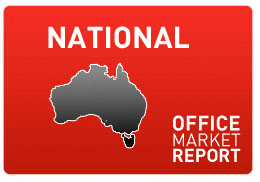From the Property Council‘s bi-annual office report:
The Sydney and Melbourne office markets continue to perform strongly despite national office market vacancy rates rising over the past six months, according to the Property Council of Australia’s latestOffice Market Report.
The report shows the Australian CBD vacancy rate increased from 10.4 per cent in January 2014 to 10.7 per cent in July 2014, but vacancies in Sydney and Melbourne fell off the back of good demand for more office space.
Property Council Chief Executive Ken Morrison said, “While vacancies across Australia’s office buildings have increased over the last six months, Sydney and Melbourne have bucked the trend.”
“The transition from the mining investment boom has seen vacancy rates increase in the resource states, but the rising demand in our two largest cities is a good sign that the non-mining sector is picking up.
“This is precisely the sort of indicator that the RBA and federal policy makers have been looking for.
“This is further evidence of our economy in transition and the need for a broad reform agenda to continue to drive growth in the real economy.
“In contrast, Brisbane and Perth are seeing weak demand in line with slowing activity in the mining sector and falling resource prices.
“In particular, Perth recorded a significant drop in demand resulting in its highest office vacancy rate in almost 10 years.
“The Brisbane CBD continues to record the highest ever vacancy rate increasing from 14.2 per cent to 14.7 per cent.
“Vacancies in Adelaide, Canberra and a number of non-CBD markets also increased.”
The report suggests vacancy rates may remain high for Brisbane and Perth into the future with supply pipelines equivalent to more than 10 per cent of current stock in Perth and almost 9 per cent of current stock in Brisbane over the next four years.
Quick Facts
Australian CBD vacancy and key indicators
Market Vacancy rate Jul 14 (%) Vacancy rate Jan 14 (%) Supply Additions 6 months to Jul 14 (sqm) Withdrawals 6 months to Jul 14 (sqm) Net Absorption 6 months to Jul 14 (sqm) Sydney CBD 8.4 9.0 29,430 35,948 23,983 Melbourne CBD 8.5 8.7 30,534 5,894 29,291 Perth CBD 11.8 9.0 8,195 0 -36,688 Canberra 13.6 12.9 28,318 8,215 -407 Adelaide CBD 13.8 12.4 6,788 0 -13,006 Brisbane CBD 14.7 14.2 9,979 9,118 -9,431 Total (all CBD markets): 10.7 10.4 113,244 59,175 -6,258


